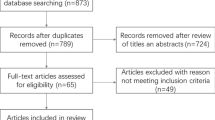Abstract
Purpose
The aim of this study is to evaluate the incidence of the anatomical anomalies of the V3 segment of the vertebral artery in the Polish population. There is conflicting evidence on the incidence of these anomalies: Asian-based studies show high incidence of 10 %, whereas the North American study identifies these anomalies in less than 1 % of patients.
Methods
1800 computed tomography angiographies (CTA) obtained at the Barlicki University Hospital in Lodz, Poland, were reviewed retrospectively.
Results
All the patients were Caucasians. There were 968 males and 832 females. The mean age of the patients was 58. CTAs were obtained for the following reasons: stroke 1312, trauma 25, vascular/aneurysm 216, and intracranial haemorrhage 247. Vertebral artery hypoplasia was present in 360 cases (20 %). Persistent intersegmental artery (type I anomaly) was not found in any study. Fenestration of the V3 vertebral artery (type II) was recognized in three angiograms (0.16 %). Vertebral artery ending up as posterior inferior cerebellar artery (type III anomaly) was seen in 11 patients (0.61 %).
Conclusions
Very low incidence of V3 segment anomalies does not justify in our opinion routine vascular imaging in patients undergoing posterior cervical instrumented procedures.








Similar content being viewed by others
References
Baaj AA, Mummaneni PV, Uribe JS, Vaccaro AR, Greenberg MS (2012) Handbook of spine surgery. Thieme, New York, Stuttgart
Hong JT, Lee SW, Son BC et al (2008) Analysis of anatomical variations of bone and vascular structures around the posterior atlantal arch using three-dimensional computed tomography angiography. J Neurosurg Spine 8(3):230–236
Yamazaki M, Okawa A, Furuya T et al (2012) Anomalous vertebral arteries in the extra- and intraosseous regions of the craniovertebral junction visualized by 3-dimensional computed tomographic angiography: analysis of 100 consecutive surgical cases and review of the literature. Spine 37(22):1389–1397
O’Donnell CM, Child ZA, Nguyen Q et al (2014) Vertebral artery anomalies at the craniovertebral junction in the US population. Spine 39(18):1053–1057
Sanders WP, Sorek PA, Mehta BA (1993) Fenestration of intracranial arteries with special attention to associated aneurysms and other anomalies. Am J Neuroradiol 14:675–680
Kadyi H (1888) Uber die Blutgefässe des Menschlichen Ruckenmarkes. Verlag von Gubrynowicz & Schmidt, Lwow
Lasjaunias P, Braun JP, Hasso AN, Moret J, Manelfe C (1980) True and false fenestration of the vertebral artery. J Neuroradiol 7:157–166
Lasjaunias P (1983) Craniofacial and upper cervical arteries: collateral circulations and angiographic protocols. Williams and Wilkins, Baltimore
Yamazaki M, Okawa A, Hashimoto M et al (2008) Abnormal course of the vertebral artery at the cranio-vertebral junction in patients with Down syndrome visualized by three-dimensional CT angiography. Neuroradiology 50:485–490
Yamazaki M, Koda M, Yoneda M et al (2004) Anomalous vertebral artery at the craniovertebral junction in a patient with Down syndrome. Case report. J Neurosurg Spine 1(3):338–341
Ciołkowski MK, Krajewski P, Ciszek B (2014) A case of vertebral artery duplication at the level of atlas: anatomical description. Eur Spine J 23(Suppl 2):285–287
Fujimura M, Sugawara T, Higuchi H et al (1997) A ruptured aneurysm at the distal end of the basilar artery fenestration associated with multiple fenestrations of the vertebrobasilar system: case report. Surg Neurol 47(5):469–472
Thierfelder KM, Baumann AB, Sommer WH et al (2014) Vertebral artery hypoplasia: frequency and effect on cerebellar blood flow characteristics. Stroke 45(5):1363–1368
Kara SA, Erdemoglu AK, Karadeniz MY et al (2003) Color Doppler sonography of orbital and vertebral arteries in migraineurs without aura. J Clin Ultrasound 31:308–314
Lovrencic-Huzjan A, Demarin V, Rundek T et al (1998) Role of vertebral artery hypoplasia in migraine. Cephalalgia 18:684–686
Ratanakorn D, Yunis C, Ferrario CM et al (2002) Noninvasive ultrasound evaluation of the vertebral artery in hypertension. J Neuroimaging 12:158–163
Uchino A, Kato A, Abe M et al (2001) Association of cerebral arteriovenous malformation with cerebral arterial fenestration. Eur Radiol 11(3):493–496
Finlay HM, Canham PB (1994) The layered fabric of cerebral artery fenestrations. Stroke 25(9):1799–1806
Wijdicks E, Sheth K, Carter B et al (2014) Recommendations for the management of cerebral and cerebellar infarction with swelling. a statement for health care professionals from the American Heart Association/American Stroke Association. Stroke 45:1222–1238
Author information
Authors and Affiliations
Corresponding author
Ethics declarations
Conflict of interest
None.
Rights and permissions
About this article
Cite this article
Fortuniak, J., Bobeff, E., Polguj, M. et al. Anatomical anomalies of the V3 segment of the vertebral artery in the Polish population. Eur Spine J 25, 4164–4170 (2016). https://doi.org/10.1007/s00586-016-4675-1
Received:
Revised:
Accepted:
Published:
Issue Date:
DOI: https://doi.org/10.1007/s00586-016-4675-1




